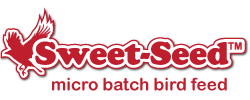How to Help Hummingbirds Out With Nesting Material

It is amazing to witness the delicate architecture that is a hummingbird nest, and backyard birders who provide appropriate materials can encourage these delightful birds to take up residence and raise their families nearby. But what materials do hummingbirds use most, and how do you be sure your yard has those nesting supplies available?
Feeders First
Hummingbirds are more likely to nest near rich, convenient food sources, and before you gather nesting materials, it is best to be sure your yard offers plenty of nectar for these birds to sip. Nectar-rich flowers such as bee balm, cardinal flowers and trumpet vines are ideal, and beautiful red blooms will help catch hummingbirds' attention. Supplemental feeders are also a great choice, and should be hung in safe, easy-to-see areas where the birds will notice them. Keep feeders clean and refill them often with fresh nectar, and your yard could support multiple hungry hummingbird families. Furthermore, minimize pesticide and insecticide use to give hummers a good supply of insects, which will provide essential protein for growing hatchlings.
Nesting Materials for Hummingbirds
Hummingbirds cannot carry sticks, branches or twigs to make their nests, but there are plenty of soft, sturdy materials available for their nesting needs. Typical materials hummingbirds take advantage of to as nest architects include…
- Mosses, lichens and similar small growth
- Plant down from dandelions and thistles
- Feathers, leaf fuzz and similar soft, cushioning materials
- Spider silk that helps bind the nest together
- Bits of bark or leaves to conceal the nest
Many of these items may already be in your yard, and you can take steps to be sure they are readily available to hummingbirds. Avoid removing dandelions that have gone to seed, and leave spider webs alone for the birds to raid. You can even provide supplemental nesting materials such as all-natural cottons and down in mesh cages or twig spheres the birds can pick apart. Keep these extra nesting materials in safe, sheltered areas, and use a broad baffle to keep them dry so they will be easier for industrious hummingbirds to collect. If you place the nesting materials near feeders or nectar flowers, hummingbirds are even more likely to find the supplies.
One nesting material you should never offer hummingbirds – or any birds – is dryer lint. While it may appear soft, fluffy and ideal for nests at first, lint is often saturated with heavy dyes, perfumes and soap residue that can endanger hummingbirds both by inhalation and by attracting predators. Dryer lint becomes caked and crumbly when wet, and a nest with this material could break apart instead of sheltering hummingbird hatchlings. Longer hairs or threads embedded in the lint could also pose a tangle or strangulation hazard to birds, especially tiny species like hummingbirds.
Viewing a Hummingbird Nest
When you find a hummingbird nest, it can be an irresistible temptation to keep a close eye on the tiny family and check on their progress regularly. It is always important to keep the birds' best interests in mind, however, and keep your distance so as not to overly stress the brooding female or the vulnerable chicks. Never touch a nest – the scent from your hands could linger and attract predators – and avoid any flash photography that could startle the birds or damage the eyes of very young chicks. If the nest is too high to see clearly – hummingbirds will build their nests from 3-60 feet above the ground – do not use any ladders or other bulky gear to approach the nest. If absolutely necessary for observation and documentation, you can use a long-handled mirror to peak into the nest briefly and check on the hatchlings' progress, but you should never take any other steps that might disturb the birds in any way. When in doubt, do less and leave the birds undisturbed!
Image by LisaBMarshall from Pixabay
